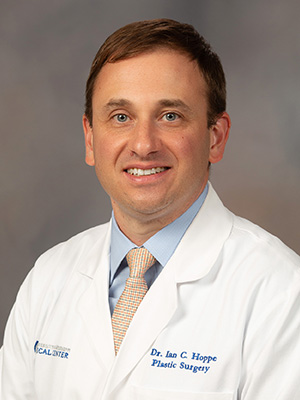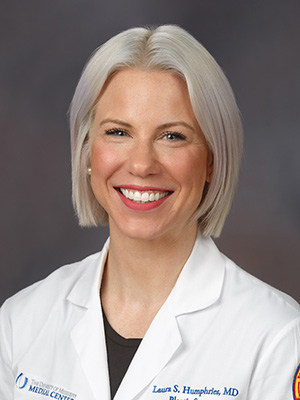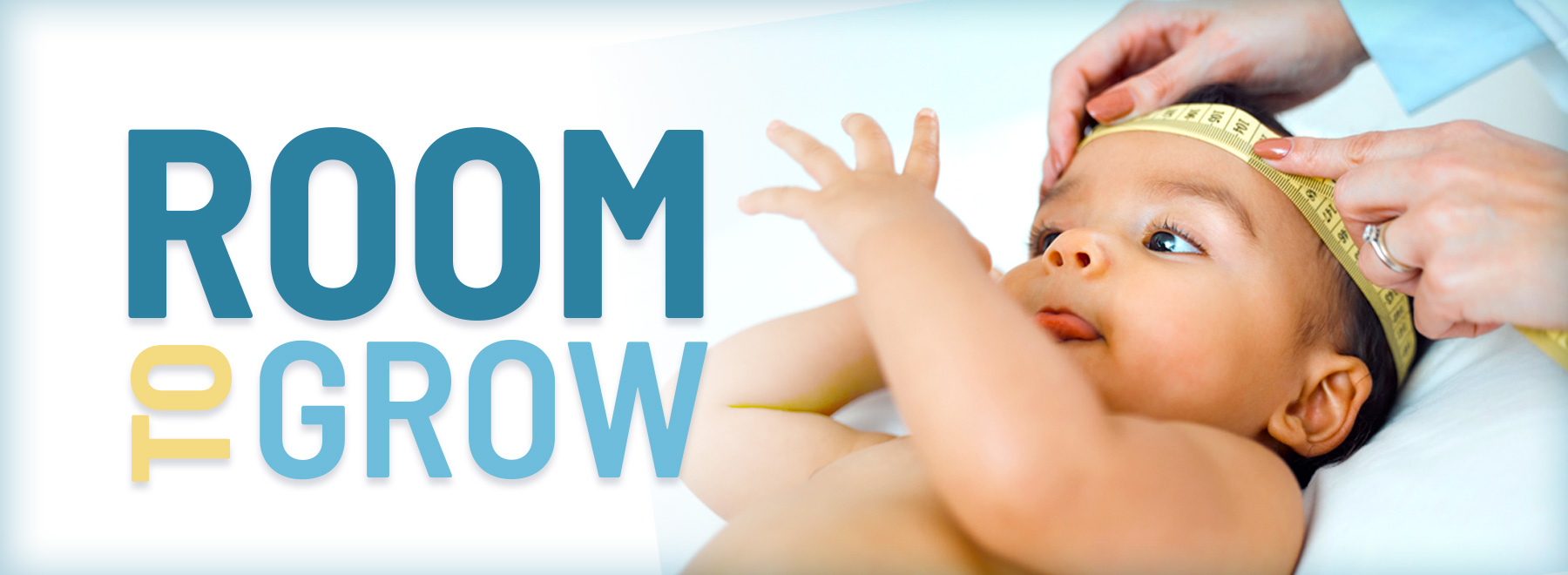Baby’s soft spot: when to be concerned
Published on Sunday, October 1, 2023
By: Annie Oeth, aoeth@umc.edu
A baby’s soft spot can be one of the most watched parts of a growing child, and for good reason. The soft spot, or fontanelle, can be an indicator of a child’s development.

Pediatricians often refer patients to the Stephanie and Mitchell Morris Center for Cleft and Craniofacial Research and Innovation because of fontanelle concerns. Dr. Ian Hoppe, surgeon-in-chief and leader of cleft and craniofacial teams at Children’s of Mississippi, and Dr. Laura Humphries, assistant professor of plastic surgery at the University of Mississippi Medical Center and a pediatric plastic surgeon, see patients who have fontanelles that are small, large, closing too soon or closing later.

“The important thing to know is that every baby’s fontanelle is different,” Humphries said. “Size and timing of closure may vary.”
Babies’ skulls have several movable bones that allow for birth and rapid growth during the first year of life. The spaces between these bones are the fontanelles, one in the back of the head that closes within about two months and one on the top of the head that normally closes by the time a child is 6 to 18 months old.
“If the fontanelle closes earlier than 6 months, we want to make sure that the patient does not have a condition called craniosynostosis – where one or more growth seams of the skull closes too early,” Hoppe said.
About one out of every 2,500 children is born with craniosynostosis. An early diagnosis is important since surgery is usually required. “The earlier the diagnosis is made, the more options we have for the kind of surgery we do,” she said.
The goal of surgery is to create room for the brain to grow, Humphries said. Both minimally invasive and more complex procedures are effective at making space for the room to grow. The type of surgery needed or recommended depends on the age of the patient at diagnosis, the number and location of cranial sutures that are involved, and the head shape.”
Not all babies with cranial differences need surgery.
Some babies have an abnormal head shape due to positioning, developing positional plagiocephaly or brachycephaly.
“The flatness of one or both sides of the head can occur because babies lay on their back for a majority of the first three months of their life, which puts pressure on the back of their heads,” Humphries said. “If the babies like to lay flat, this results in a flat back of the head on both sides. If the baby likes to turn their head to one side, then that part of the back of the head will be flatter. Some conditions, like tightness of the neck muscle (torticollis) can make this flatness worse.”
As in other craniofacial conditions, an early evaluation with a craniofacial specialist is best so treatment options such as physical therapy and, for more severe cases, helmet therapy can be considered.
“Helmet therapy means that a special helmet is made for the baby to help off-load pressure on the part of the skull that is flat and to allow the brain and the skull to grow in that direction,” Humphries said. “The need for helmet therapy will be determined by the severity of the flatness, the age of the patient, the baby’s ability to hold their head up, and the degree of improvement in head shape as the baby grows.”
Children’s of Mississippi’s cleft and craniofacial programs are the only programs in the state with accreditation from the American Cleft Palate-Craniofacial Association. ACPA certification requires access to a multidisciplinary team including surgeons, psychologists, dentists, audiologists, ophthalmologists, social workers, geneticists and genetic counselors, speech therapists and orthodontists.
“ACPA’s standards for approval are high, so we take pride in being ACPA-approved cleft teams,” Hoppe said.
The Morris Center includes two board-certified craniofacial surgeons, two pediatric neurosurgeons, a specialty-trained nurse practitioner, a craniofacial coordinator, and a fully staffed team to help take care of patients with craniofacial differences.
If there are any concerns about a baby’s head shape, it is important to be evaluated by a board-certified craniofacial surgeon and their team, Humphries said. “Their expertise is important to help make a diagnosis and recommend potential treatments.”
The above article appears in CONSULT, UMMC’s monthly e-newsletter sharing news about cutting-edge clinical and health science education advances and innovative biomedical research at the Medical Center and giving you tips and suggestions on how you and the people you love can live a healthier life. Click here and enter your email address to receive CONSULT free of charge. You may cancel at any time.



